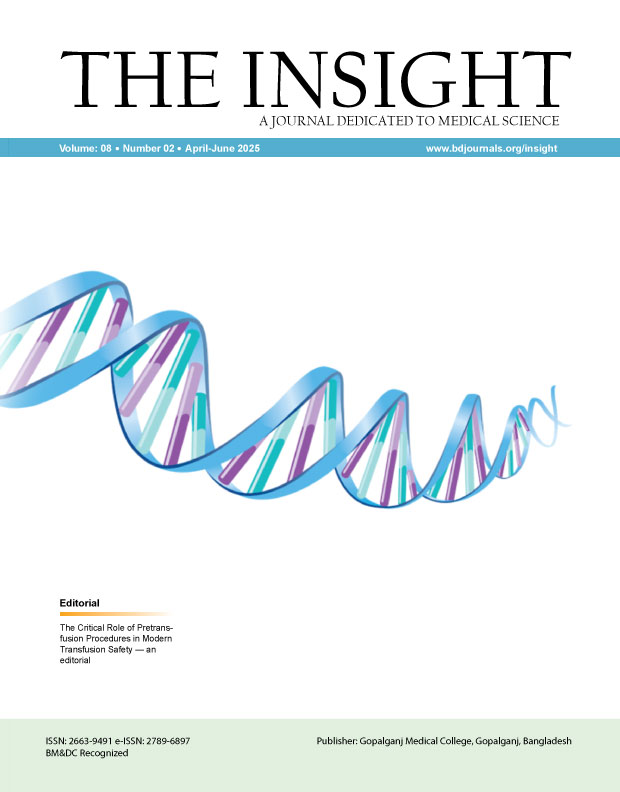Abstract
Introduction: Chronic headache is a common neurological complaint often requiring MRI to exclude secondary causes. While most are primary headaches, some may reveal significant intracranial abnormalities. The prevalence of such MRI findings varies, with limited data from Bangladesh. Methods & Materials: This cross-sectional study at Bangladesh Medical University enrolled 51 chronic headache patients (ICHD-3 criteria). All underwent clinical evaluation and brain MRI, with contrast when needed. Two radiologists independently reviewed scans, classifying findings as significant or incidental. Data were analyzed with p<0.05 as significant. Results: The mean age of participants was 36.5 ± 15.1 years (range 8–65), with females representing 58.8%. Headaches were most commonly bilateral (76.5%) and dull in nature (72.5%). Associated symptoms included nausea, vomiting, or photophobia in 58.8% of cases. Hypertension (37.3%) and diabetes mellitus (39.2%) were the most common comorbidities. MRI revealed abnormalities in 86.3% of patients, while 13.7% had normal scans. The most frequent abnormalities were sinus disease/sinusitis (33.3%), hypertrophy of inferior turbinates (23.5%), white matter lesions (11.8%), infarcts (9.8%), and tumors (9.8%). ICD-based diagnoses showed deep white matter ischemic disease in 86.3% of patients. No statistically significant association was found between abnormalities and age (p=0.28) or sex (p=0.40). Conclusion: A high proportion of chronic headache patients in this study demonstrated significant MRI abnormalities, particularly sinus pathology and ischemic changes. These findings emphasize the importance of selective imaging based on clinical features to optimize resource use in resource-limited settings.

This work is licensed under a Creative Commons Attribution 4.0 International License.
Copyright (c) 2025 The Insight





 PDF
PDF